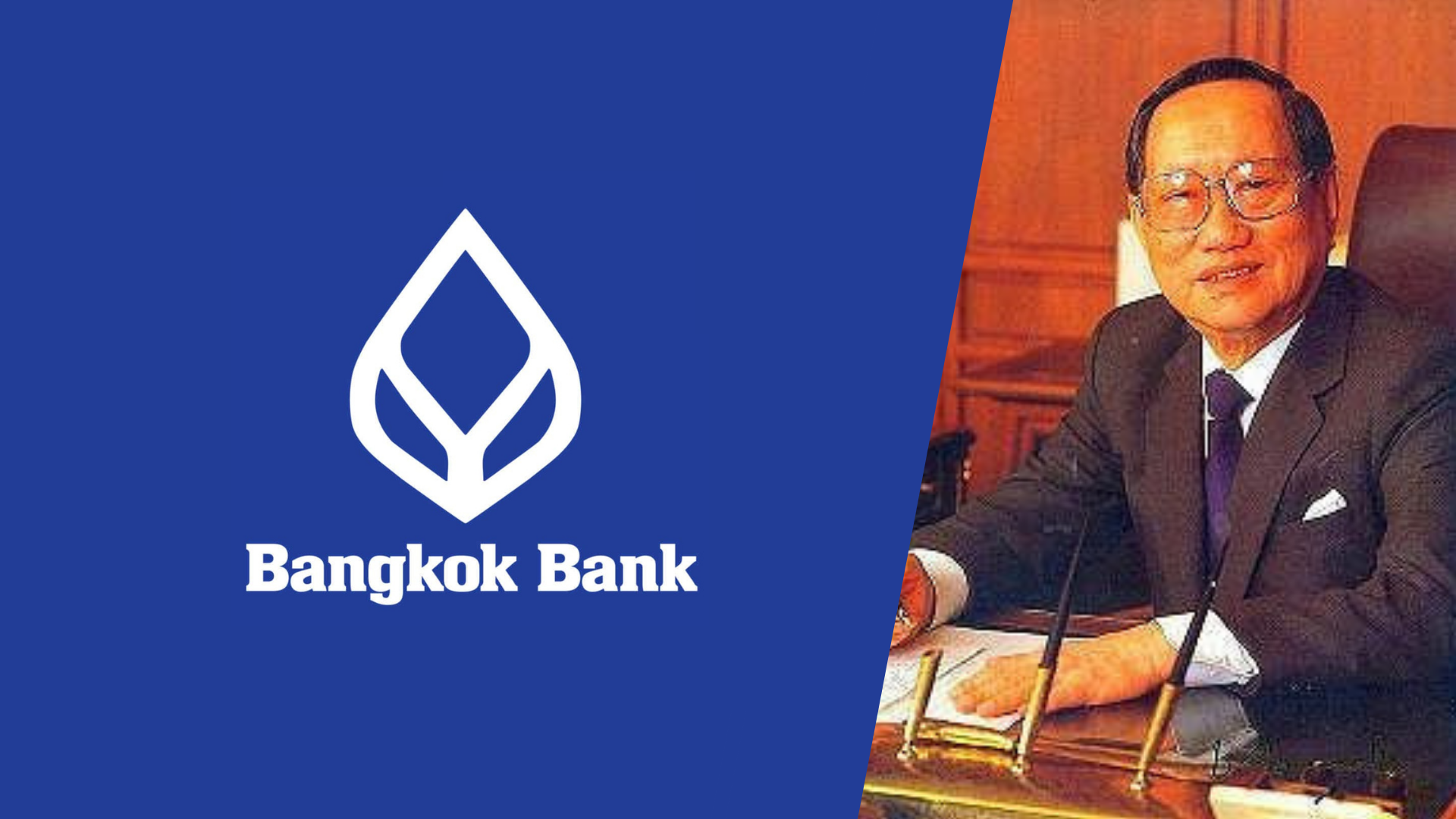


If you've ever done business in Thailand, you've probably seen their dark blue signage.
Bangkok Bank isn't just a bank. For generations, it's been the financial backbone of Thai entrepreneurs, serving everyone from stall owners to regional exporters, often long before they had formal business plans.
Today, Bangkok Bank is Thailand's largest commercial bank with over 17M customers, more than 1,160 branches nationwide, and total assets exceeding $95B.
🇹🇭 The founder
Meet Chin Sophonpanich.
Born in 1910 to a Chinese immigrant sawmill worker father and a Thai-Chinese mother, Chin understood hardship from birth.
At five, he was sent to China to study. He came back to Thailand at 17 and worked as a laborer initially.
But by the 1940s, he had risen from a laborer to running his own trading businesses. And so, when World War II came about, he saw an opportunity.
💪🏼 Wartime opportunity
In 1944, World War II still raged.
The city had been bombed by Allied forces, foreign banks from Allied nations had been forced to close, and the Thai economy was severely disrupted by wartime inflation and shortages.
European banks had shuttered after Thailand declared war on the US and UK in January 1942.
Local merchants and Chinese traders found themselves with few reliable banking options as the financial infrastructure crumbled.
So, in 1944, Bangkok Bank opened for business in two modest shophouses in Bangkok's Chinatown.
Chin Sophonpanich and partners established the bank to serve Thai and Chinese merchants who desperately needed banking services.
Bangkok Bank grew by serving the Chinese and Thai merchant community that Chin understood well. The bank became embedded in Bangkok's commercial landscape, financing the trade and businesses that would drive Thailand's post-war recovery.
😰 The crisis year
By 1957, Bangkok Bank had become one of Thailand's most important financial institutions. But that year brought crisis.
Political relationships that took years to build vanished in hours. And business leaders who had thrived under the previous regime suddenly found themselves vulnerable.
Like Chin. And now, he faced a choice that would define Bangkok Bank's future: stay in Bangkok and navigate the new political landscape, or find another way to protect what he'd built.
He made a decision that seemed impossible: he would run Bangkok Bank from Hong Kong.
Chin fled to Hong Kong, where he would remain in exile while continuing to guide the bank's operations from afar. His sons and trusted managers ran the day-to-day operations in Thailand.
🌊 International and local
And because Chin moved to Hong Kong in 1957, Bangkok Bank gained something that their Thai competitors didn't have: dual perspectives.
With international oversight from Hong Kong, local execution in Thailand, and global banking standards combined with local relationships, Bangkok Bank had a unique structure.
Bangkok Bank developed relationships with overseas Chinese business networks across Southeast Asia while never losing touch with Thai merchants.
Bangkok Bank would grow to become Thailand's largest bank and one of Southeast Asia's most important financial institutions, with the family maintaining control through multiple generations.
Chin died in 1988 at age 77, having built Bangkok Bank into a regional powerhouse from his Hong Kong base.
🔥 Tested, again
But they were tested again. In July 1997, Thailand's economic miracle collapsed in a single day.
The Asian Financial Crisis hit. It brought currency devaluation, massive loan defaults, and several major Thai banks failed or required government bailouts within months.
Bangkok Bank's market capitalization crashed. Executives watched their world crumble on trading screens.
But the bank survived.
Those conservative lending practices and risk management systems that Chin had drilled into Bangkok Bank's DNA for five decades proved their worth when many failed.
While competitors had chased rapid growth and speculative real estate loans during the boom years, Bangkok Bank had stuck to the fundamentals: know your customers, lend carefully, and maintain capital buffers.
The crisis transformed Bangkok Bank culturally.
Risk discipline became even more central, and capital buffers became sacred.
Yes, growth ambitions remained, but they were always tempered by hard-earned caution.
🌿 Here and now
Today, three generations later, Bangkok Bank operates across 14 markets with total assets exceeding $95B.
The leadership succession tells its own story: Chin (1944-1988), his son Chatri (1980-1992), his grandson Chartsiri (1994-present). Three generations maintaining the same philosophy that started in those shophouses, supporting entrepreneurs.
Even their boldest move, the 2020 acquisition of Indonesia's Bank Permata for $2.28B, followed Chin's playbook.
To build on existing relationships, understand the market deeply, and think decades ahead.
Generations of Thai businesses have grown alongside Bangkok Bank.
Small family operations that Chin first served in 1944 have become major corporations, expanding together over eight decades, building modern Thailand's economy one careful transaction at a time.
Sometimes, the best way to build an empire isn't to chase the biggest customers. It's to find the underserved and understand them so deeply that when they grow, you grow with them.
Eight decades later, that philosophy still deposits dividends.

The newsletter that keeps you up-to-date on the top stories on tech and business in Southeast Asia. It's fun, quick and free.